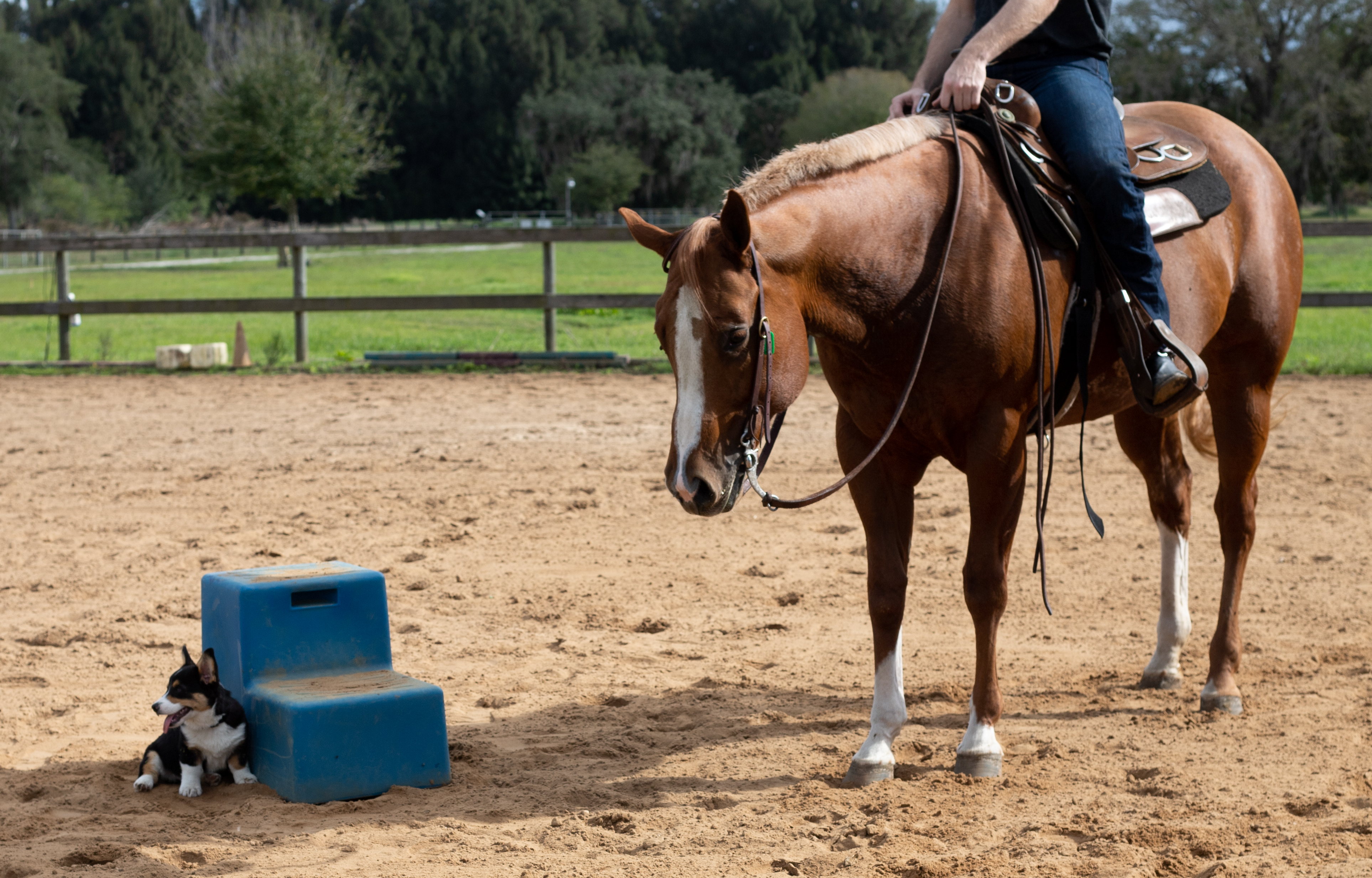It’s no secret that horse barns often have a few ‘barn dogs’ running around. These dogs know the drill and have an understanding of what they should and shouldn’t do around horses. Once a dog knows how to properly behave around the barn, it’s great seeing two of our favorite animals interact.
However, dogs need to learn this behavior before it’s safe to let them run free around the barn. If you are introducing your dog to ‘barn life’, follow these tips to help keep all of your furry friends safe.
1. Teach Important Commands
- Make sure your dog knows important commands such as sit, stay, and come before you bring them to the barn. It’s a good idea for them to be an expert at these commands at home because the barn is an overwhelming environment and they might not be able to focus on a task they are still learning.
- Another important command for your dog to learn is ‘out’. This will help your dog understand places he is and isn’t allowed to go. If you’re brushing your horse on the wash rack and your dog wants to join, gently use your leg to push him out of the area and say ‘out’. Eventually, they will understand that this word means they shouldn’t be in that space.
2. Don’t Let Bad Habits Start
- As soon as your dog jumps out of the car at the barn for the first time, they’re going to be exposed to a whole list of new, fun things they will want to play with. For the first few times your dog is at the barn, keep them on a leash so you can be on top of preventing a bad habit from starting. If he starts to chew on something he isn’t supposed to, immediately stop him and don’t let it become a habit.

- The same thing goes for your dog trying to chase a horse’s tail, jump at a horse walking by, and get into other things they shouldn’t be. Since he will be on a leash, you can easily control him before he learns these bad behaviors.
- Once your dog understands the things he shouldn’t be doing while you’re in control, take him off the leash but still follow him closely. Monitor his behavior and stop him from getting into something he shouldn’t. When he is behaving well with your supervision, you can start to slowly let him be on his own. It’s always important to keep an eye on your dog just in case, but you won’t have to be on top of him at all times.
3. Reward Good Behavior
- Don’t forget to keep treats on hand at all times and reward him when he is being good. This is how he will learn the difference between good and bad behaviors. When he lays down in a safe spot and is being good, reward him. It won’t take him long to realize that when he does those things, he will get a treat.
[More on Dog Safety: Introducing Your Dog to Horses]
Other Tips:
- Keep a harness or short leash on your dog at all times so you can easily grab him when you need to.
- Your dog is going to want to follow you to the arena while you ride. This is an important behavior to teach because you won’t be able to watch him every second when you’re on your horse. Start by tying him in a safe place in or out of the arena and leave him there every time you ride. Eventually, this will become his “arena spot” and he will automatically go there when you head out to the arena. It’s a good idea to choose a spot near a solid object that won’t move often like a mounting block. This way they are safe next to an object that a horse won’t be riding too close to.

- Don’t force your dog to be a ‘barn dog’. They won’t all adjust to it and some will always be afraid of horses no matter how hard you try. If this is the case, let them stay home or in a comfortable crate in the tack room or office where he will feel safe.
The transition into a ‘barn dog’ will take some practice but in the end, you will feel great knowing both of your furry friends cant interact safely at your favorite place, the barn!






